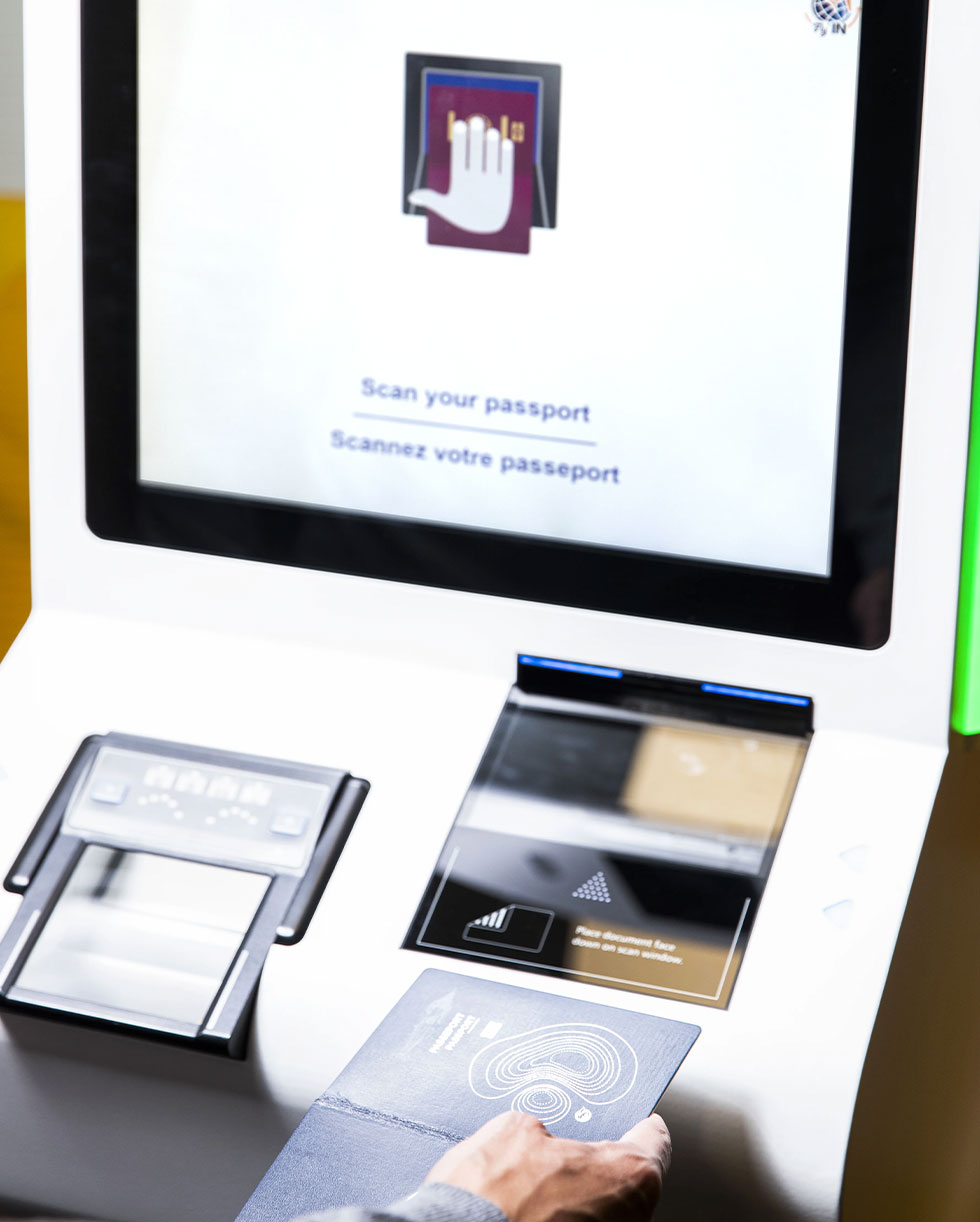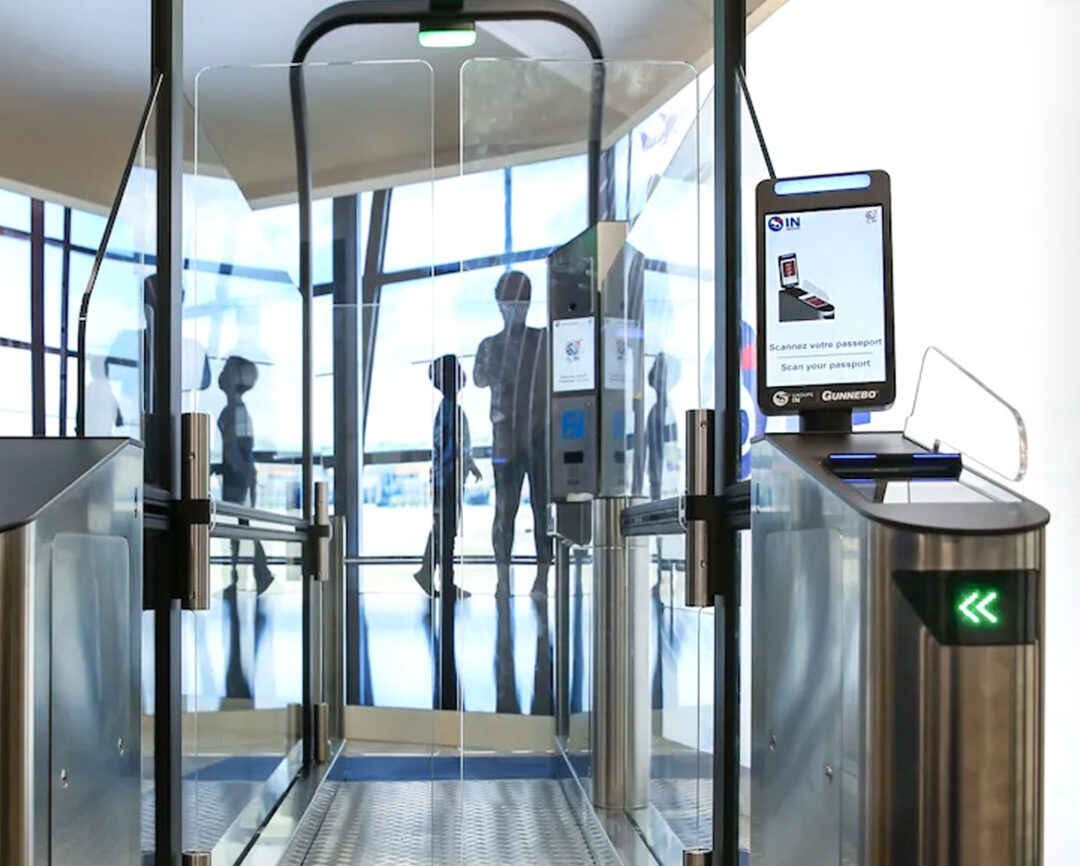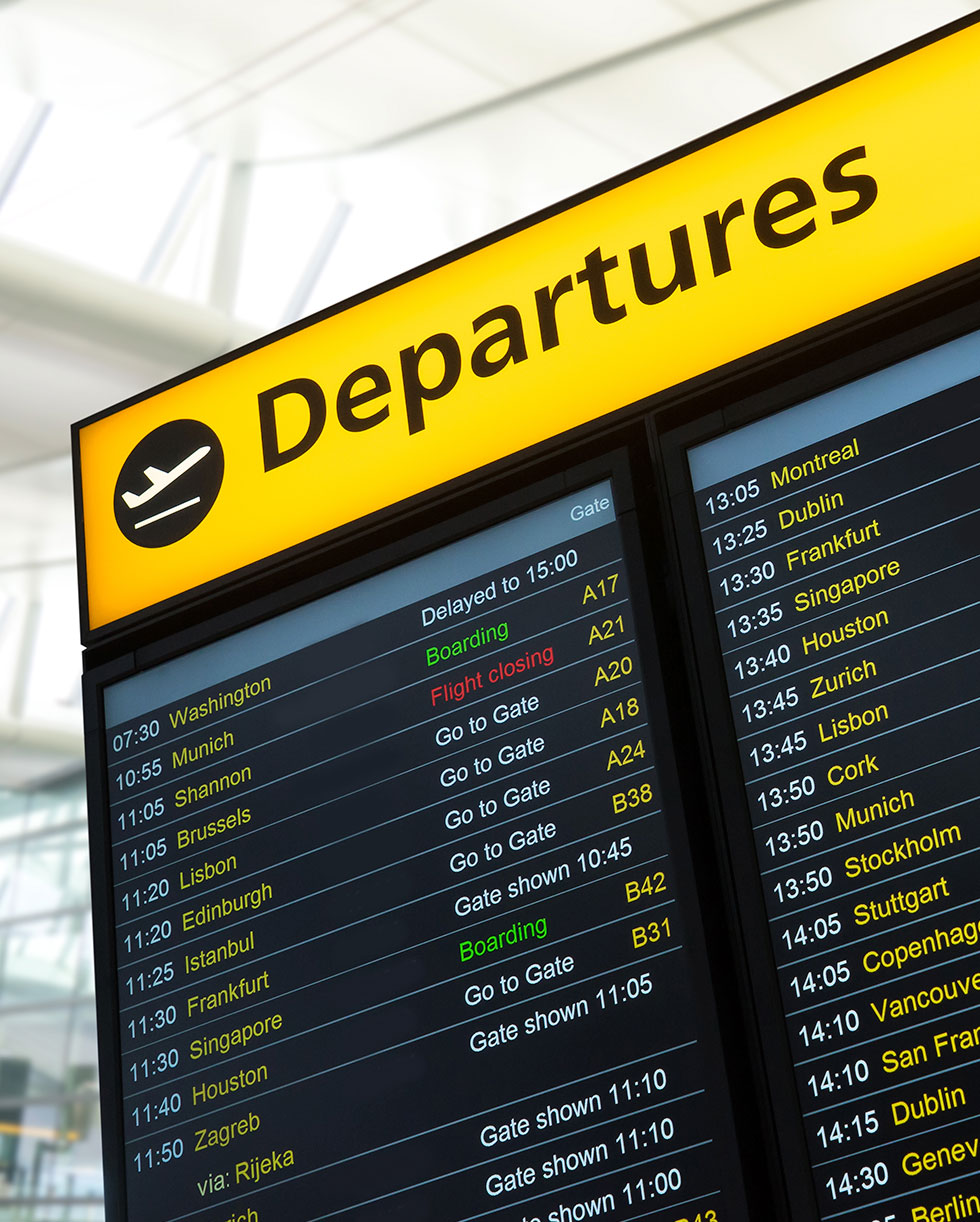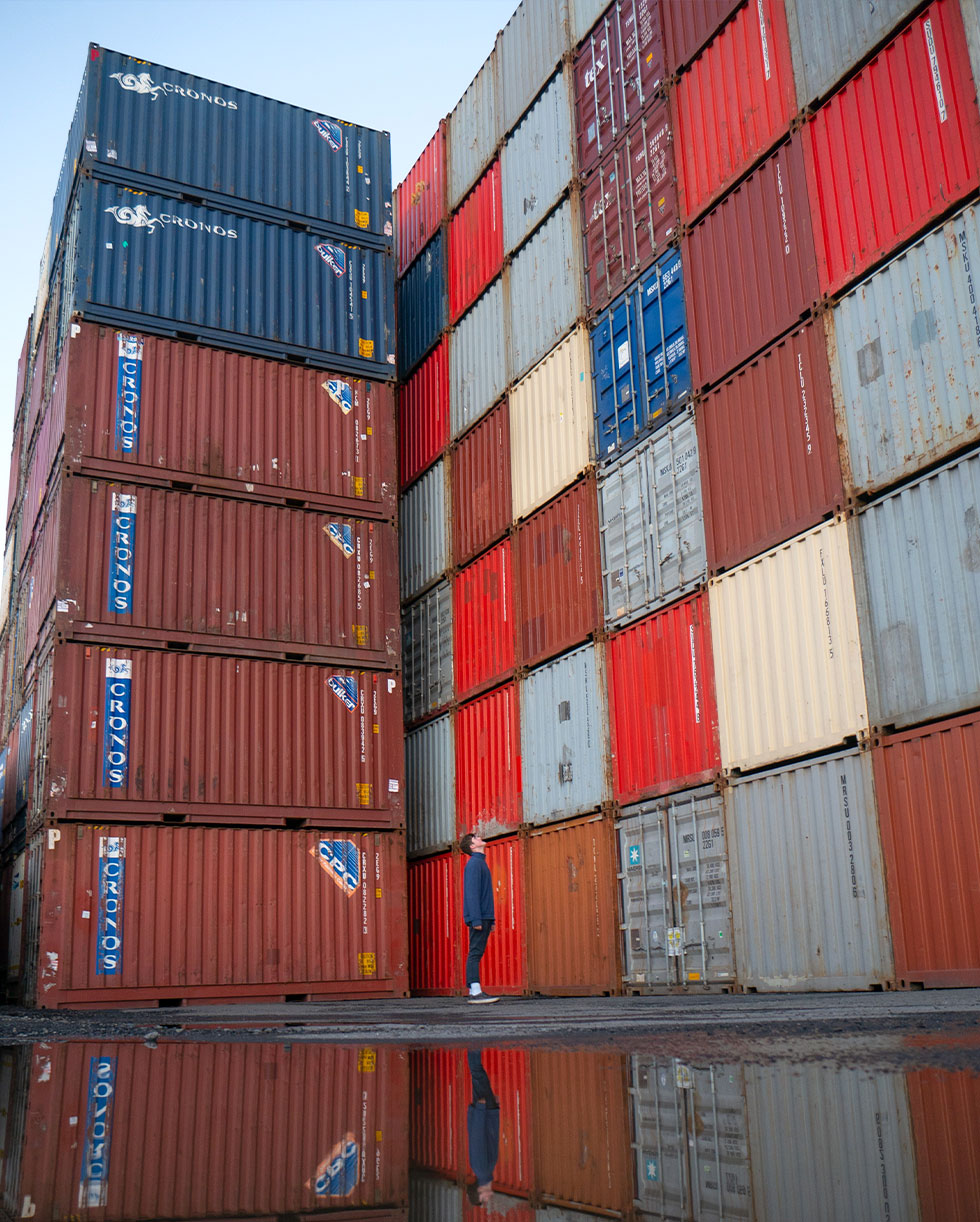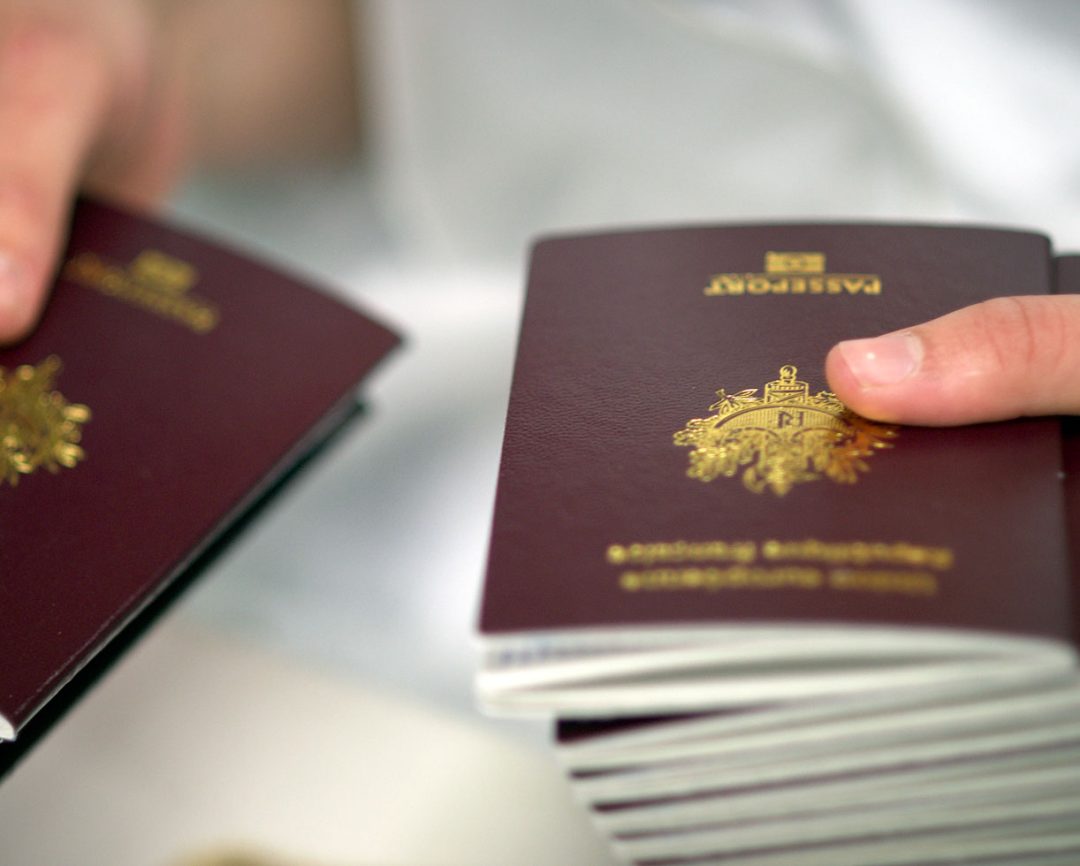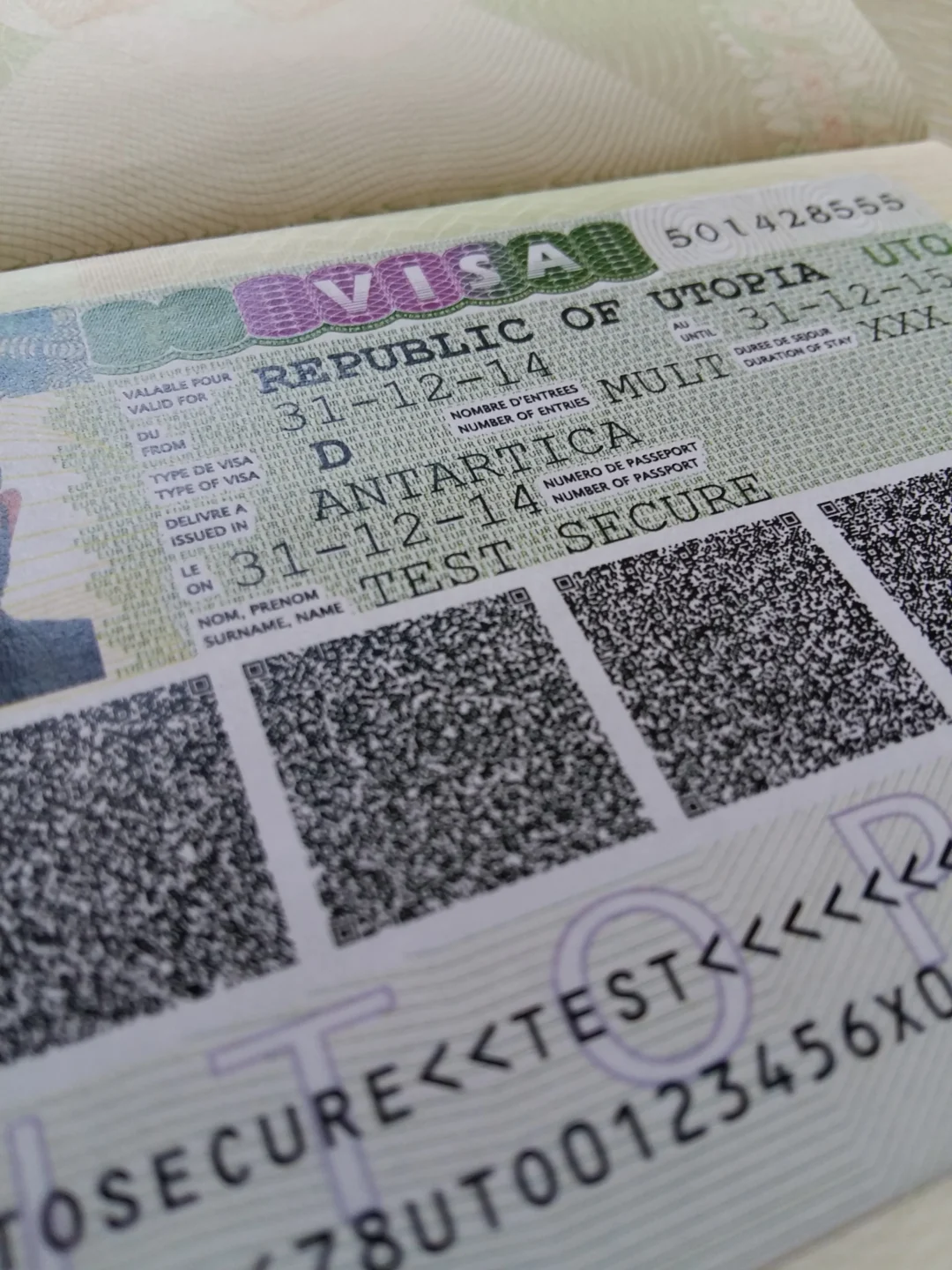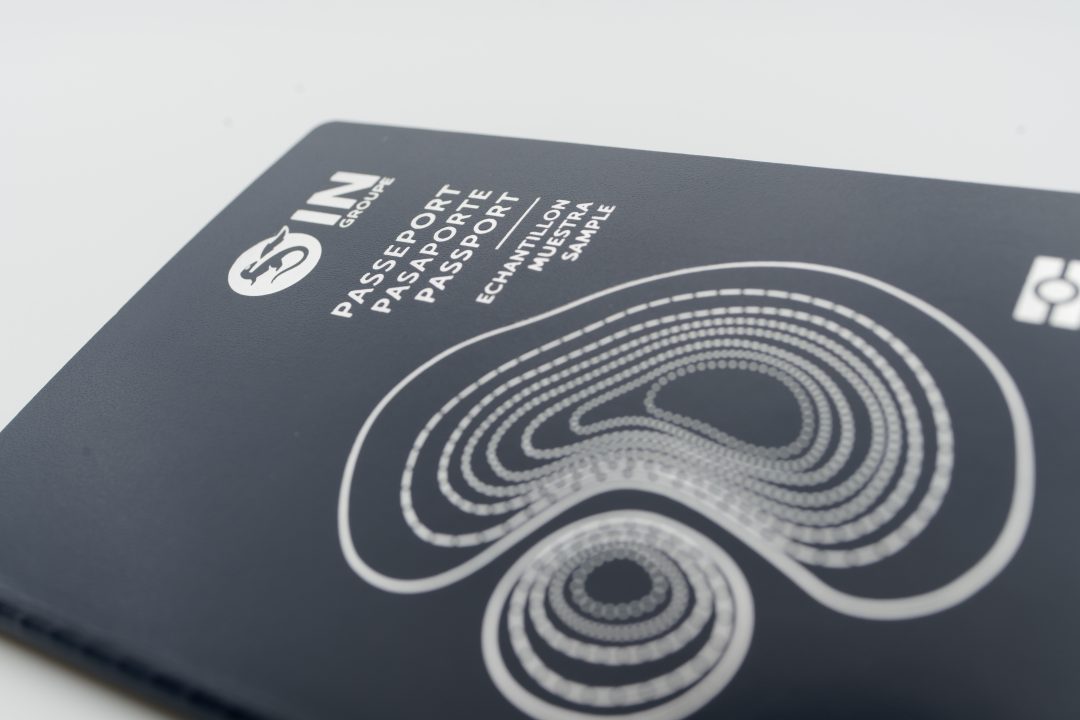European Entry/Exit System
A challenge for infrastructure operators in terms of fluidification of passenger traffic
IN Groupe offers a secure self-service pre-registration solution before the border crossing.
Nowadays, millions of travelers enter and exit the Schengen area every day. They are all affected by the roll-out of the entry/exit control system on a European scale. The agreement signed by member countries in 2017 comes into force in 2024. This is a major challenge for all operators of passenger transit infrastructure, because new administrative formalities and controls are being put in place.
In addition to electronic controls of all third-country nationals (TCNs), the Schengen area's entry/exit registration system wanted by the European Union tracks, shares and centralizes all traveler data at European level (their biographical and biometric data, their dates of stay, their routes, etc.).
The system enables information on passengers to be shared at European level within the Schengen area. It helps states enforce the rules in force, in particular the rule on authorized length of stay (no more than 90 days in the Schengen area over e period of 180 rolling days).
From 2024, pre-registration before border controls will be mandatory and will apply at all border crossing points of the Schengen area.
Available for all air, sea, rail or road crossing points, the IN Groupe's self-service kiosk is a multimodal interactive and ergonomic solution accelerate border crossings while maintaining an optimal level of security.

Self-service EES kiosks and tablets, key points of the IN Groupes system
A secure facial biometric capture solution with an integrated anti-spoofing function to pre-empt any identity theft attempt
High-performance biometric equipment Created and made in France; compliant with European EES and EU Lisa requirements
A hybrid pool of “fixed” and “mobile” EES systems to ensure more eligible passengers at the ABC (Automated Border Control) Gates
Technical supervision for centralized management of the entire deployed pool
Professional supervision interfaces for assisting passengers using the equipment as soon as possible
Optimized maintenance thanks to equipment designed to be repaired in under 20 minutes
24*7 operation of the deployed systems;
Indoor or outdoor EES systems
CE and UKCA certified EES systems
The EES kiosk, completely secure individual pre-registration
In view of migratory issues and the ever-increasing flows of people in the Schengen area in recent years, managing borders has become a major European priority, a security issue assumed by all the Member States. The aim of installing passenger data gathering systems at border crossing points is two-fold:
- Guaranteeing fluid passenger flows without compromising security levels
- Ensuring consistent and global data sharing of the collected data throughout the Schengen area
Depending on the type of infrastructure (stations, ports, airports), self-service EES kiosks are placed at strategic points on passenger journeys.
There is considerable pressure on these areas, which receive a high volume of passengers and for which traffic fluidity is a significant economic challenge. They must handle their passenger flows according to where passengers come from. They must also differentiate between “first-time” and “subsequent” border crossings.
Passengers entering the Schengen area for the first time must do complete enrolment, including their biographical and biometric data (footprints and photo) to create their EES record. Passengers already having their EES record are known as “subsequent” and can enjoy a faster-automated border crossing.
Furthermore, passengers having an EES record can benefit from automatic border crossing by simply using the ABC (Automated Border Control) Gates. These offer faster border crossings by combining checks of travel documents and individuals' identity checks.
Self-service EES kiosks, to save time without adversely affecting security
It takes less than 2 minutes for passengers to carry out the pre-registration process with their complete record at one of the IN Groupe's EES kiosks available for French airports, ports and stations. Identity verification takes only a few seconds, as does verifications of the date and place of entry/exit or refusal of entry in the Schengen area for each passenger. Passengers scan their travel documents themselves, share their biometric data (fingerprinting and facial photograph) and answer a few necessary questions before the border controls.
This makes border crossings easier and quicker. As the vast majority of passengers are in a legal situation, the Border Police concentrates on cases requiring particular attention.
The collected data is centralized and stored on a secure European Union server for no more than 5 years. Above all the data enables all member countries to share all passenger information (identity, visas, etc.). Each country can then assess the potential risk posed by any passengers before they enter the country. It can also optimally manage the granting or withdrawal of any passenger's visa and take the necessary measures if authorized lengths of stay on Schengen territory are exceeded.
The EES system, which at European level is managed by EU LISA, completes the existing database systems to ensure controls of other travel documents. These include the VIS (Visa Information System) databases, which store all visas granted, and SIS (Schengen Information System), which lists all refusals of visas issued in EU member countries.

The self-service EES kiosk, usable continuously in any weather
IN Groupe has developed the only EES kiosk on the market that can be installed both indoors and sheltered outdoor points. Under an open shelter without being directly exposed to bad weather, it is designed to be used in even the harshest weather conditions.
With the steady rise in the number of passengers and the administrative formalities required of them, maintaining fluid passenger flows is a major challenge. This is precisely what is offered by combined systems of pre-registration kiosks at various points of the passenger journey and mobile devices used by authorized officials. Their ever-increasing number and the variety of their locations are needed to create new points of interaction and handle these flows differently. Placing self-service kiosks outside the airport, port or station is one of the relevant solutions for reducing queues at “last-minute” check-in points and in controlled zones. Flows are thus better controlled and more fluid.
Available 24/7, the kiosk has no time or bank holiday constraints. Its operation never stops!

EES tablets, an additional system to improve passenger journeys
In addition to EES kiosks, which are fixed systems, IN Groupe offers a tablet-based solution to deal with certain mobility-related use cases such as priority crossing points not on the standard passenger route (pregnant women, persons with restricted mobility, etc.).
Authorized staff are issued with equipment offering the same functions and passenger journey as the kiosk for registering an EES record.





